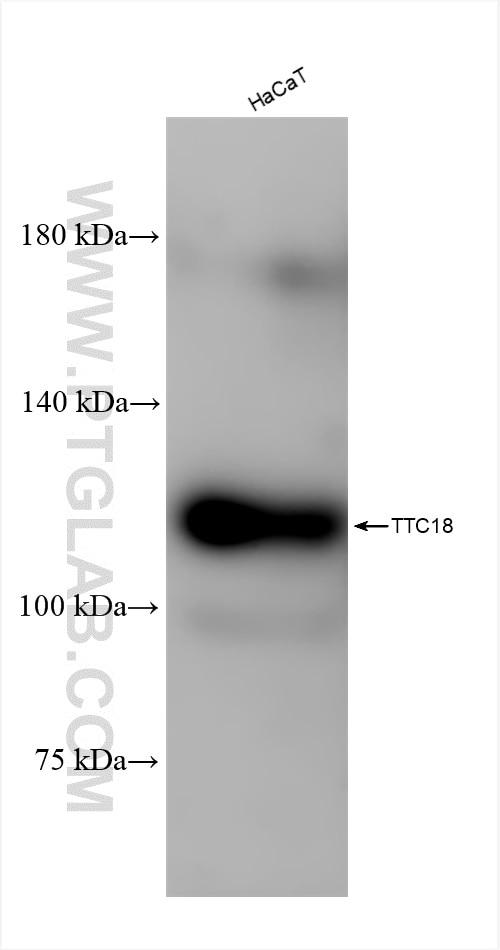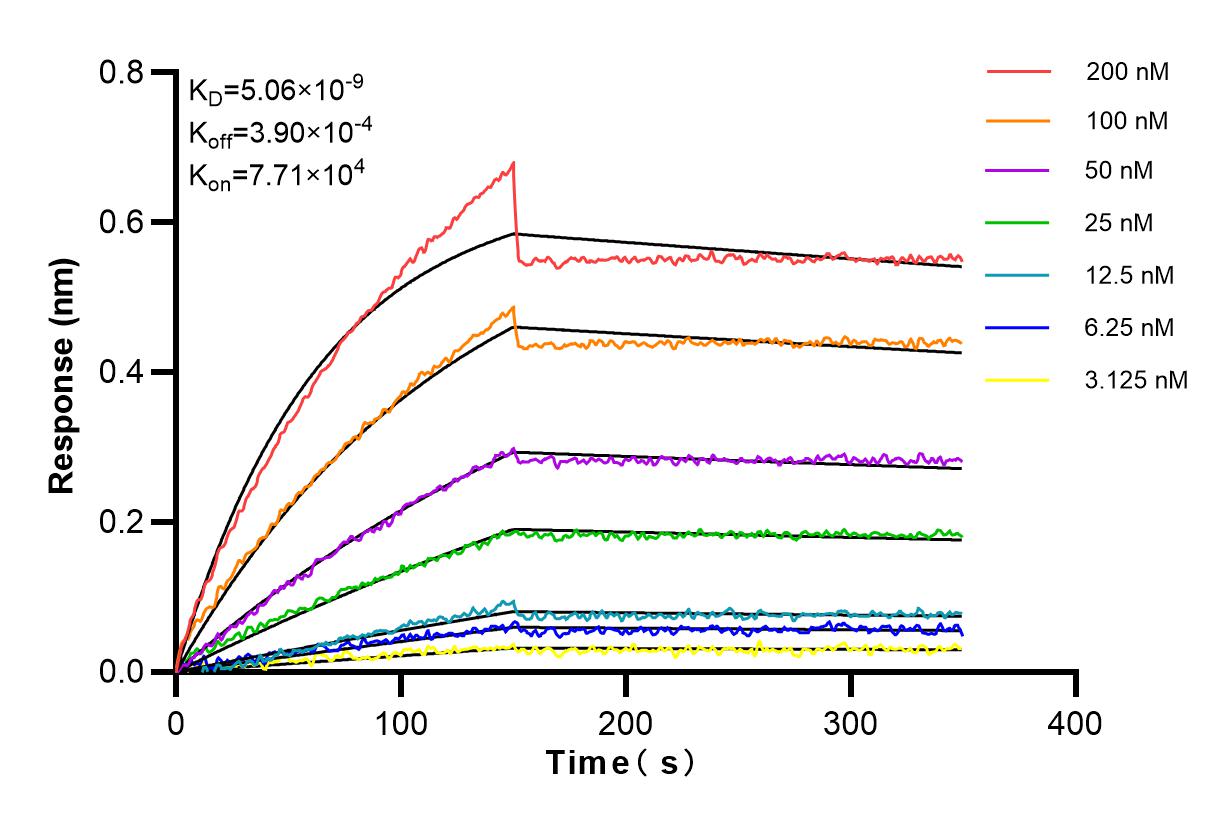Tested Applications
| Positive WB detected in | HaCaT cells |
Recommended dilution
| Application | Dilution |
|---|---|
| Western Blot (WB) | WB : 1:1000-1:4000 |
| It is recommended that this reagent should be titrated in each testing system to obtain optimal results. | |
| Sample-dependent, Check data in validation data gallery. | |
Product Information
84133-5-RR targets TTC18 in WB, ELISA applications and shows reactivity with human samples.
| Tested Reactivity | human |
| Host / Isotype | Rabbit / IgG |
| Class | Recombinant |
| Type | Antibody |
| Immunogen | TTC18 fusion protein Ag35209 Predict reactive species |
| Full Name | tetratricopeptide repeat domain 18 |
| Calculated Molecular Weight | 126 kDa |
| Observed Molecular Weight | 126 kDa |
| GenBank Accession Number | BC032856 |
| Gene Symbol | TTC18 |
| Gene ID (NCBI) | 118491 |
| RRID | AB_3671691 |
| Conjugate | Unconjugated |
| Form | Liquid |
| Purification Method | Protein A purfication |
| UNIPROT ID | Q5T0N1 |
| Storage Buffer | PBS with 0.02% sodium azide and 50% glycerol , pH 7.3 |
| Storage Conditions | Store at -20°C. Stable for one year after shipment. Aliquoting is unnecessary for -20oC storage. 20ul sizes contain 0.1% BSA. |
Background Information
Cilia- and flagella-associated protein 70 (CFAP70) harbours eight tetratricopeptide repeats (TPRs) and bound tightly to the ciliary axoneme. CFAP70 is necessary to assemble spermatid flagella and could be used as a diagnostic target for male infertility with OAT in the clinic.CFAP70 is a novel regulatory component of the ODA in motile cilia and flagella, and that the N-terminus is important for its ciliary localization (PMID: 30158508).
Protocols
| Product Specific Protocols | |
|---|---|
| WB protocol for TTC18 antibody 84133-5-RR | Download protocol |
| Standard Protocols | |
|---|---|
| Click here to view our Standard Protocols |





